Hoop House Move and Winter Garden
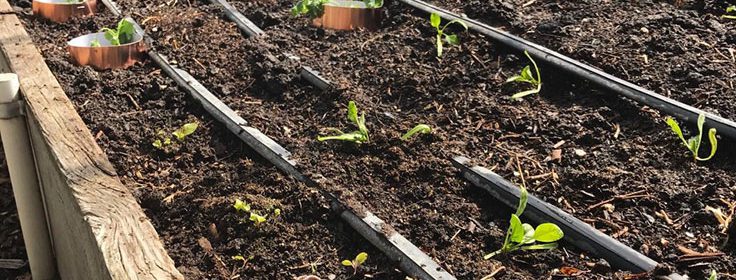
Now that fall is here, that means it’s time to move our hoop house. Then we can put in the last of the winter garden. Some of you might not be familiar with this. Even though we live in USDA zone 5, I can still grow vegetables year-round, without any supplemental heating. More on that in a moment.
I thought you might enjoy seeing some of the steps we go through to move our small hoop house. It is 9′ long by 10′ wide and covers two of our raised beds. We made it four years ago. You can watch a video on the process and see a supply list in this blog post.
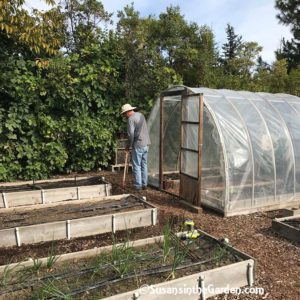
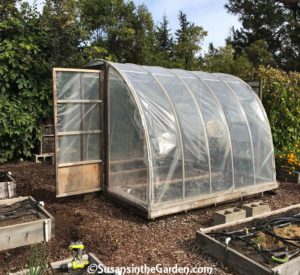
Above: Bill is raking the bark away from the 2 beds that the hoop house will be covering. Then he removes the concrete blocks and rebar posts that the hoop house was attached to in its current location.
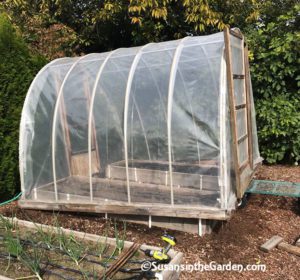
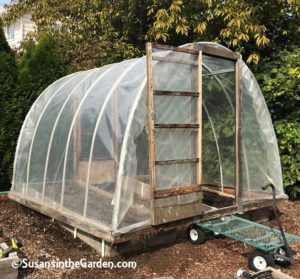
We use a wheeled cart under one end of the hoop house. Then Bill lifts the opposite end, then we just wheel it to its new location. You wouldn’t believe how quickly this all takes place! Then Bill reattaches the hoop house to the rebar posts, although it’s in a fairly sheltered location now.
I have learned over the past four years that it’s important to select cold-tolerant vegetable crops and varieties. This year, I’m growing a dwarf ‘Vates’ kale, ‘Matador’ spinach, corn salad (mache), miner’s lettuce (claytonia) and regular lettuce.
Of those crops, I started everything but the corn salad and claytonia indoors. The others like to be direct-sown into the garden bed. Everything was planted about 3 weeks ago. I have to admit that I should have started them a couple of weeks prior to that. Chalk it up to my busy schedule!
One of the frustrating things I’ve found is that slugs can be a problem. You would think they’d die off during our cold winters but no such luck. Slugs absolutely love to eat kale leaves, so I have a system for keeping them away from the plants.
It involves the use of Corry’s Slug & Snail barrier tape. The copper tape reacts electrically with the slimy skin of slugs. It does the same to snails but we don’t have them here. But slugs and snails don’t want anything to do with it. Just make a ring out of it for each plant. Then staple it together and place one around the base of each plant. For me, this really only applies to kale plants because they are the most feasible to protect with the rings. That’s due to their single main stem.
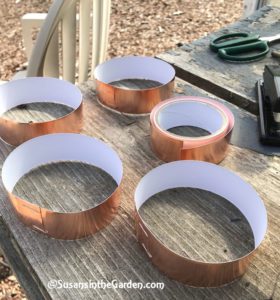
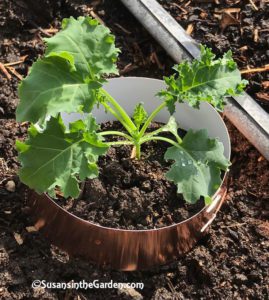
For the other crops, I’m keeping a close eye on them. If I see any slug damage, I’ll sprinkle some diatomaceous earth on the soil surrounding the plantings.
We are keeping one of the hoop house doors open for now. I’ve covered the lettuce/corn salad/miner’s lettuce bed with bird netting for now since they sometimes go into the hoop house. The other bed (kale and spinach) is covered with floating row cover because. Believe it or not, cabbage butterflies and leaf miner flies occasionally fly inside the hoop house in past years. Five years ago, when I planted my first winter garden, I assumed they wouldn’t be around in the fall. Boy was I wrong and yes, they caused a lot of damage!
Here is how everything has been planted (this was taken prior to covering the individual beds):
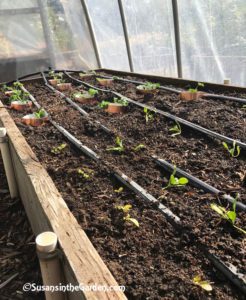
Stay tuned for updates on how the winter garden is doing!

